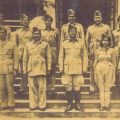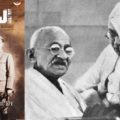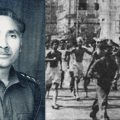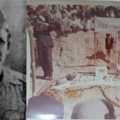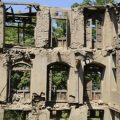Official Diary Account of How Netaji’s INA Defeated British in Manipur
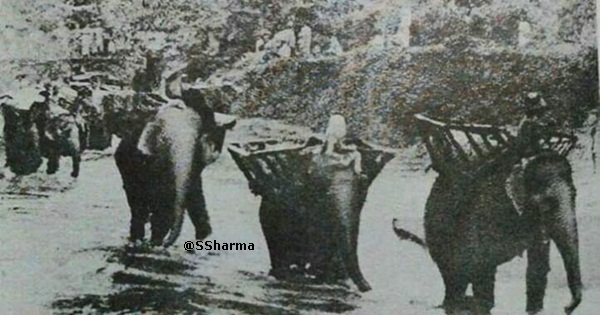
This diary account of the achievements of the INA (Azad Hind Fauz) in Manipur is put as it is, as mentioned in the National Archives of India, Govt. of India.
Feb. 3, 1944 – Sri S.A. Ayar, publicity and propaganda Minister announced that preparations had been complete for an attack.
Feb. 4, 1944 – The INA in coordination with the Japanese Forces attacked the enemy’s forces at Buthidang and captured Taung Bazar.
Feb. 5,1944 – Enemy’s forces retreat from Buthidang – are severally bombed. The INA and Japanese Forces advance along the Eastern Bank of Mayo river Vizigapatam bombed.
Feb. 12, 1944 – The VII and V Divisions of the 14th British Army were completely routed. The total loss of the VII division amounted to 10,000 killed or made prisoners of war. Many Indian soldiers of the British Army came over to the Indian National Army.
Feb. 21, 1944 – The Headquarters of the Supreme Council of the Azad Hind Fauj issued its first communique as follows:
“Latest information received from the Arakan front reporting further successes achieved by our units, shows that the Indian National Army participating in the operations in the Akyab district are pushing into enemy positions in cooperation with the main forces of the Nippon Army.”
“Meanwhile, advance units of the Indian National Army, who in concert with the Nippon forces are now engaged in cutting off the enemy’s retreat near Nyaunggyang, have destroyed bridges in that area and have advanced into the Bawli Bazaar district where they are now operating.” “Another unit of the Indian National Army, which has been pushing forward along the Mayu River since the commencement of operations, has succeeded in bringing over to our side an Indian unit ofthe British Indian Army. The number of officers and soldiers of this unit will not be disclosed for the time being.
“The same Indian National Army unit has penetrated into the Taung Bazar area, from where it is now pushing forward into the enemy’s rear and is steadily gaining the desired war result.”
The battle for Imphal, important enemy base and capital of the State of Manipur, reached its decisive stage, following the capture by Indian forces of the two vital centres, Ukhrul and Sanghak. These places formed a vital junction in the defence of Imphal and the British loss of these important centres had rendered it virtually impossible for them to hold out at Imphal for any length of time. The frontline dispatches stated that Indian forces were within fifteen miles of Imphal.
On March 19, 1944 came the sensational and joyful news that the Indian National Army had captured Tiddum, crossed the Indo-Burma frontier and were now on the Indian soil.
March 21 -I.N.A. captured Toangzan and Hata Boko Aerodrome at Arakan Front.
March 22 – I.N.A. marches to Manipur enroute Tamu in Kaba valley.
March 23 – I.N.A. captured Viddak. in Kaba valley. 1,000 enemy soldiers killed.
March 24 -I.N.A. reached Tamu-Imphal Aerodrome bombed.
March 25-INA 30 miles off Imphal – Tiddam-Imphal road cut off – INA gaining ground at Tiddan Tamu and Imphal.
March 26 -INA Tiddam captured – 10,000 soldiers of 17th Division besieged – 15th division in Arakan Front bombed. – The battle of Imphal begins.
March 27 – 1,000 motor lorries captured in Central Sector – INA crosses Chindwan river.
March 28 – Battle for Kohima begins.
March 29 – Nikkala Aerodrome captured – Chittagong bombed.
March 30 – Sangshal captured – Ukhsal and Palel-Tamu Road cut off.
March 31 – Imphal-Kohima road cut off – 2,700 enemy soldiers killed and 760 made prisoners of war at the South Indo-Burma Front.
April 1 – fierce fighting near Imphal. INA captures a ration depot in the west of Mayo river.
April 2 -INA only seven miles off Imphal.
April 3 -Imphal-Kohima road captured.
April 4 – Mavilia, Tamu and Serikung captured. Another Cantonment 30 Kilometres off lmphal captured.
April 7 – Assam-Bengal Railway threatened – Sylcher bombed.
April 8 – Kohima Fort and a cantonment over Dimapur-Kohima road captured.
April 9 – Fierce battle around Dimarpur. Encirclement around Imphal tightens.
April 12 – Sebong, Chemol, Tinupur and Chirachanpur forts captured.
April 13 – Imphal attacked from many sides. Tishanki Cantt. on Imphal Toangyan road captured. INA reach Moreh.
April 15 – Parphema Cantt over Kohima-Dimarpur road destroyed – INA 15 kilometres off Dimapur -Imphal-Hoehang Road cut off- Bishanpur over Imphal-Sylcher road attacked.
April 16 – Enemy -forces in Imphal cut off. Nichu Garh situated 10 kilometres off south west of Dimapur captured.
April 17 – Hill no. 3424 around Imphal and hill NO. 3449 to the South-East of Pangang Poke captured. Mathingiang Cantt. Captured.
April 18 – Imphal attacked from all sides. INA penetrated through north fortifications of the enemy.
April 19 – Tignali captured.
April 20 – The Fourth British Army retreating. INA forces swiftly tightening the encirclement around Imphal.
April 22 – Battle for Imphal raging fiercely.
April 23 – Hill NO. 461 on Kohima sector, Palativa, Tignapur and Moirang captured.
April 24 – Imphal bombed-Hills to the south of Bishanpur captured.
April 25 – 28 – Shenom and Sebom posts captured.
April 29 – Hill no. 4080-20 kilometre south-east off Imphal captured.
April 30 – Phalong near Imphal captured. INA reaches near Kingchop.
May 1-2 – Palel attacked – A post 7 kilometres off Palel captured.
May 4 – Hill no. 3735 near Imphal captured. Langel Post 10 kilometres south-east of Palel captured. On the Boothidaung Front, the main strength of the INA units crossed the Mayu river night and immediately launched a fierce offensive completely repulsing the enemy in that sector. The enemy forces on the Maungdan front entirely isolated from the Boothidaung sector, frantically retreated to rear positions.
May 7 – Enemy fortifications south ofImphal bombed.
May 8 – Lord Mountbatton’s Headquarters announce the capture of Boothidang by INA.
May 12 – Imphal and Cox bazar heavily bombed, general attack on Mayu, Many hills in the vicinity of Boothidang captured.
May 13 – Imphal bombed. Enemy’s tanks and lorries over KohimaDimapur road bombed.
May 15-16- Fierce attacks on Bishanpur.
May 17 – Hills on 55 and 74 on Mayo Front captured.
May 18 – Bishanpur bombed – The enemy defeated in Imal and Lima Kong valley to the north Imphal.
May 20- Besiege of Imphal tightens.
May 21- Fierce battle over Bishanpur.
May 22 – Ukhral road completely in our hands – Enemy’s position weak on Palel Front.
May 23 – 1275 enemy soldiers killed on Boothidang Front.
May 24 – Fierce fighting around Imphal – Esham captured.
May 26 – Some part of Palel Front destroyed.
May 31 – Imphal bombed – INA penetrates into south-east of Kohima.
June 1 – The monsoon rains begin.
June 3 – A village to south of Tignapur captured – Fierce battle on Kohima front.
June 4 -INA captures a cantonment to the South-west of Palel.
June 13 – The enemy’s 20th Division on Palel front forced to retreat.
June 14 -INA reaches Mythin Kanu.
June 16 – Kunjala and hill No. 4605 over Palel Front captured.
June 17 – Khangjol captured.
June 27 – The siege of Imphal lifted -enemy begins offensive – INA on the defensive.
The monsoon deluge now flooded the communication and supply routes of the INA on the front. Since it started operations in February 19:1944, the Indian National Army was halted for the first time in July. Breakdown of transport and supply conditions forced it to fall back. During the five months of fierce fighting; the Indian National Army had given ample proof of their superior fighting qualities, their courage an unshakable devotion to duty. They encountered the enemy’s numerically superior and better equipped forces successfully and gave them crushing defeats on various fronts.
This diary account is there in the National Archives and provided word-to-word by Shubham Sharma (great grandson of Maj KP Sharma, who led a mass revolt against British in Jabalpur following INA trials in Red Fort; Subham’s forefathers were in Azad Hind Fauz. His Tatuji was Col Dhillon who was tried in Red Fort, famous as INA Trials). This diary details were narrated by Capt Lakshmi Sehgal of INA to Shubham Sharma in 2011. The details also find mention in Gen Shahnawaz Khan’s book My Memories of INA and Netaji published in 1946 by Rajkamal Publication.
Featured image (real photograph of INA TROOPS CROSSING CHINDWIN RIVER, in March 1944 and on 6th April 1944 the troops of Bahadur Brigade reached Kohima Pass. On 14th April, INA won battle of Moirang under the command of Col Shaukat Ali Malik, who was honored with Sardar E Jung for this victory): Shubham Sharma.
Team MyIndiaMyglory
Latest posts by Team MyIndiaMyglory (see all)
- Akal Bodhan: Ram’s Invocation of Durga during War against Ravan - April 30, 2024
- Panel Discussion on Manipur, Northeast in Western Ghats Lit Fest - April 30, 2024
- 21 Recipients of Shri Aurobindo Samman 2023 for Nation Building - April 30, 2024

